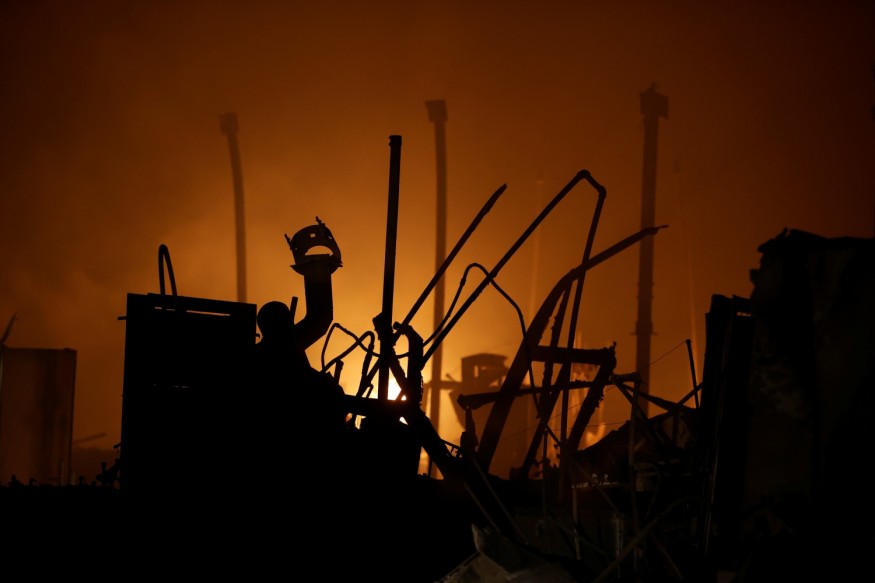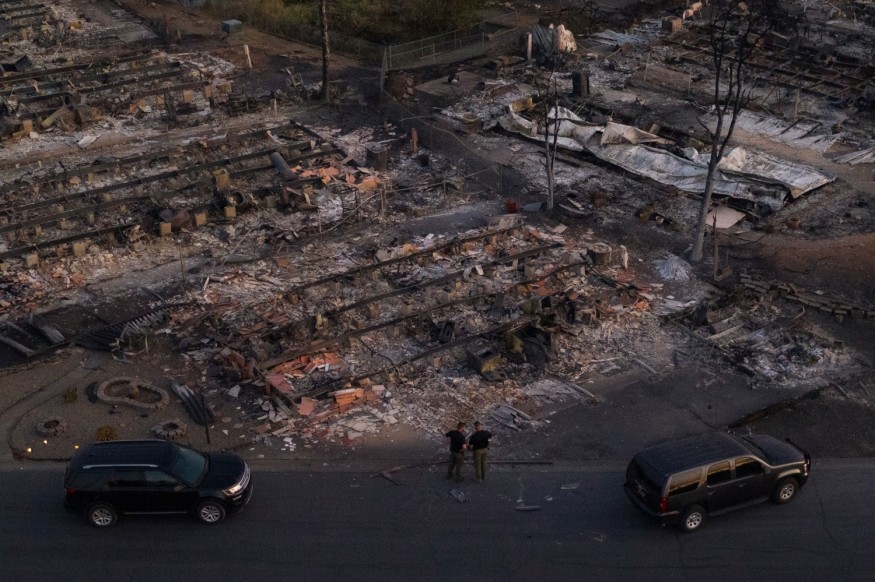Wildfires have been raging in the US, fueled by strong winds and rising temperatures, causing unprecedented devastation, particularly in California, Oregon, and Washington.
The fires have damaged scores of homes and establishments and displaced tens of thousands from their homes.

California
The State of California has already reported three deaths. Earlier this week, the National Guard airlifted hundreds of peoples trapped by the Creek Fire in Sierra National Forest.
Extreme wildfire threat also prompted the utility company PG&E to enact a "last resort" shut off across several state areas, leaving more than 170,000 California residents with no electricity.
Meanwhile, firefighting efforts are hampered by gusty winds and searing temperatures ranging to more than 100 degrees Fahrenheit.
More than 14,000 firefighters are racing against time to fight 25 major wildfires across California, depleting its resources.
In Northern California, the Bear Fire filled the Bay Area with smoke and orange glow, forcing thousands of people to evacuate. The Bear fire burned a thousand acres every half hour, spreading across communities surrounding Oroville. The massive plume from a fire from the Sierra Nevada sent big smoke to the atmosphere, blocking the sun. The smoke from Bear fire also added to the smoke, with its massive volume rising to 40,000 feet overnight.
More than 2.5 million acres of land have been consumed by fire this year, nearly 20 times more than they were burned by wildfires last year.
Craig Shoemaker, a meteorologist with the National Weather Service in Sacramento, said that the fires are creating their weather
as it formed a vast cloud of ash and ice that resembled thunderstorm clouds.
READ ALSO: Military Chopper Rescues At Least 200 from California Wildfire at Sierra National Forest
Oregon
In Oregon, fires appeared to be more destructive. A wildfire driven by 45-mile-per-hour wind gusts swept through two towns, damaging more than a thousand homes.
According to Gov. Kate Brown of Oregon, "This could be the greatest loss of human lives and property due to wildfire in our state's history." She reported at a news briefing that some towns like Detroit, in central Oregon; Blue River and Vida, east of Eugene; and Phoenix and Talent, in the state's southwest were "substantially destroyed."
Pheonix Mayor Chris Luz estimates that more than 1,000 homes have been burned, and hundred in Talent. He also reported that the downtown area was devastated, with many businesses lost as the wildfires continued on Wednesday. Residents had little time to evacuate as the fire rushed into town by winds of about 45 miles per hour.
More than 300,000 acres of land have been burned by about 35 wildfires triggered by hot, dry winds.
In Marion County, crews found two people dead in a vehicle from a wildfire. Sheriff Joe Kast fears that they may find more bodies as rescue operation ensues.

READ: Emergency Declared in Marion County as Wildfires Rage Across Oregon
Washington
Gov. Jay Inslee reported that 480,000 acres were burned by the wildfires across Washington this week.
Malden's town was the hardest hit where nearly all homes, municipal buildings, post office, and the fire station were all burned to the ground.
In northern Wahington, a one-year-old boy was killed in the Cold Springs fire, while his parents suffered third-degree burns.
READ NEXT: Amazon Fires in Pantanal Threaten Jaguars and Reserves
Check out more news and information on Wildfires on Nature World News.
© 2026 NatureWorldNews.com All rights reserved. Do not reproduce without permission.





